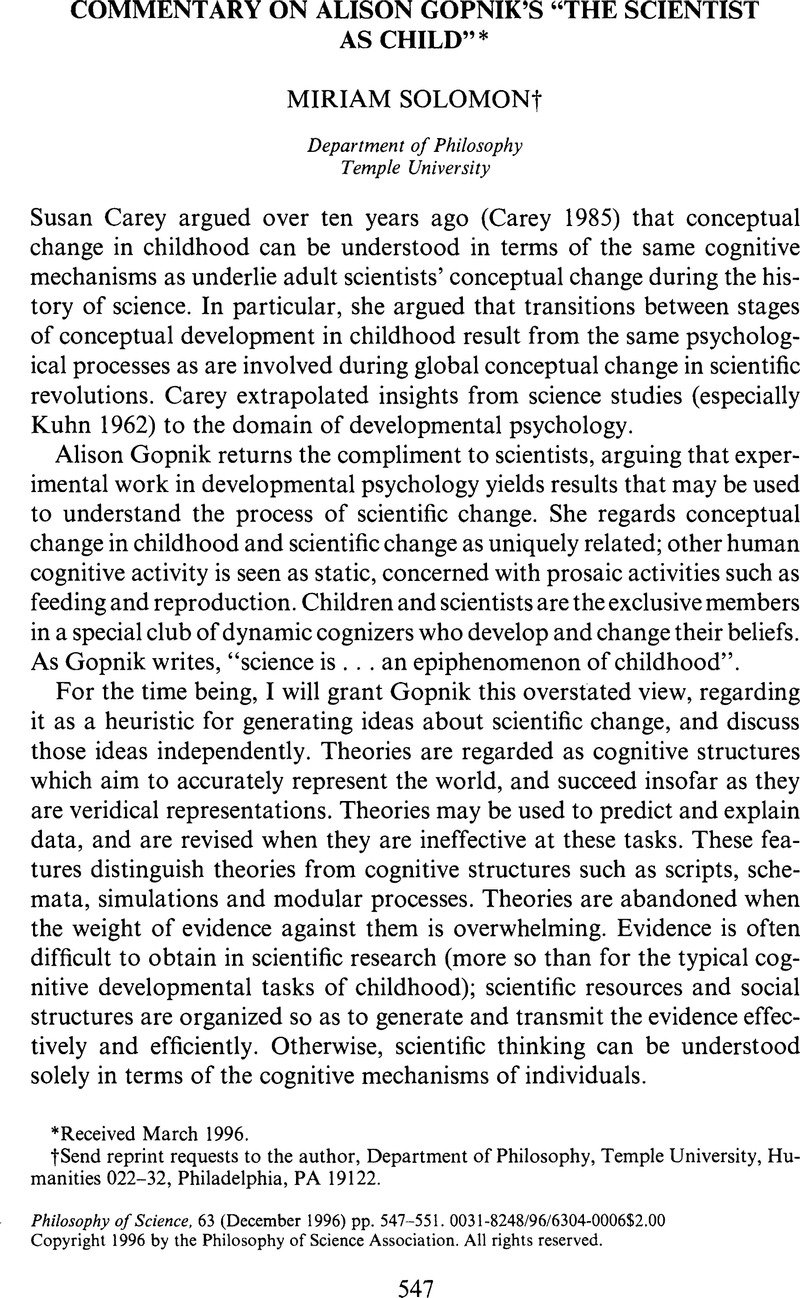Crossref Citations
This article has been cited by the following publications. This list is generated based on data provided by Crossref.
Downes, Stephen M.
1999.
Can Scientific Development and Children's Cognitive Development Be the Same Process?.
Philosophy of Science,
Vol. 66,
Issue. 4,
p.
565.
Ezquerro, Jesús
and
Martínez-Manrique, Fernando
2004.
Truth, Rationality, Cognition, and Music.
p.
133.
Glennan, Stuart S.
2005.
The modeler in the crib.
Philosophical Explorations,
Vol. 8,
Issue. 3,
p.
217.
Wringe, Bill
2011.
Cognitive individualism and the child as scientist program.
Studies in History and Philosophy of Science Part C: Studies in History and Philosophy of Biological and Biomedical Sciences,
Vol. 42,
Issue. 4,
p.
518.
Green, Sara
2019.
Science and common sense: perspectives from philosophy and science education.
Synthese,
Vol. 196,
Issue. 3,
p.
795.
Goffart, Laurent
and
Levy, J.-C.S.
2024.
Cerebralization of mathematical quantities and physical features in neural science: A critical evaluation.
EPJ Web of Conferences,
Vol. 300,
Issue. ,
p.
01007.



